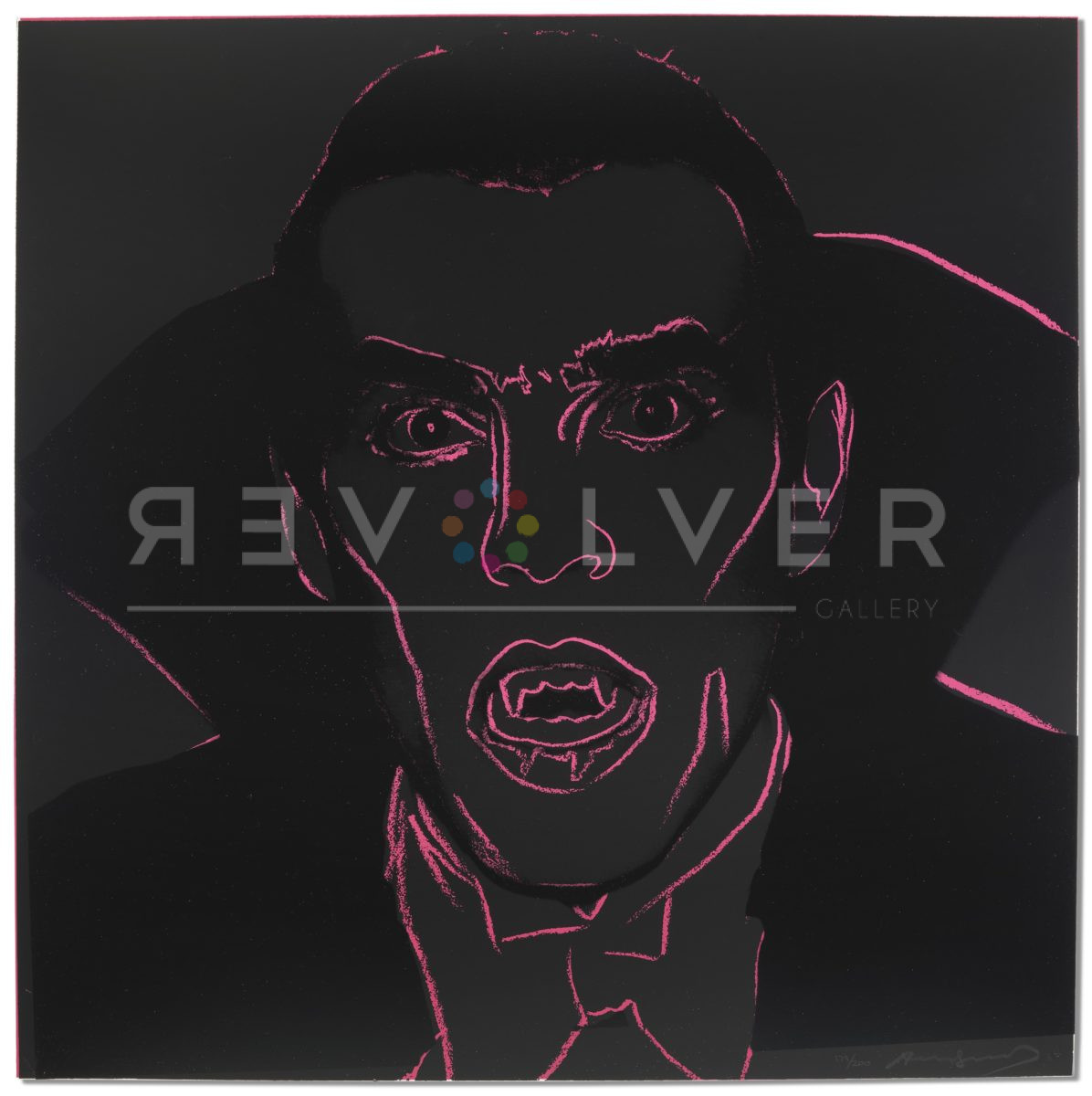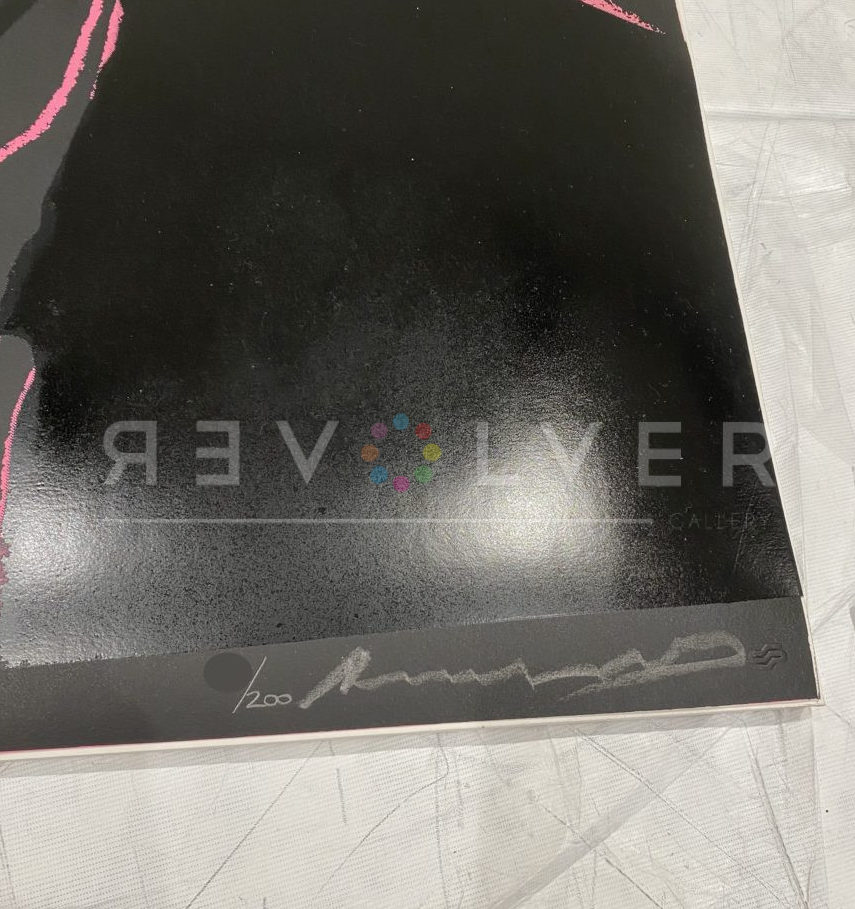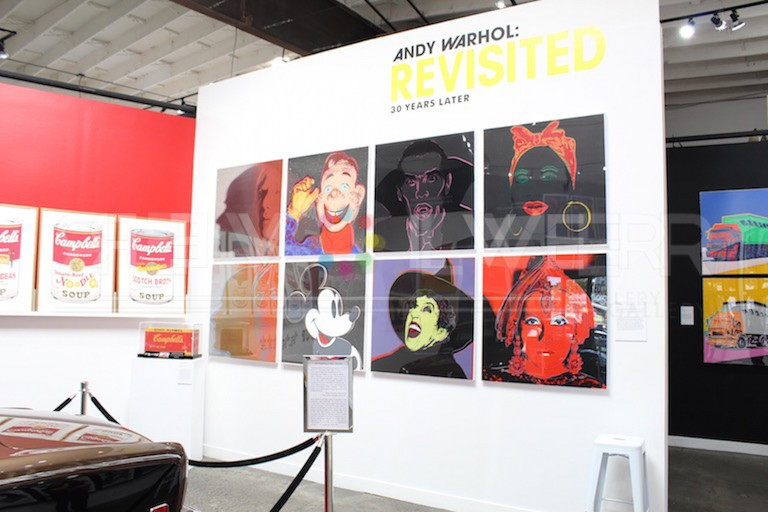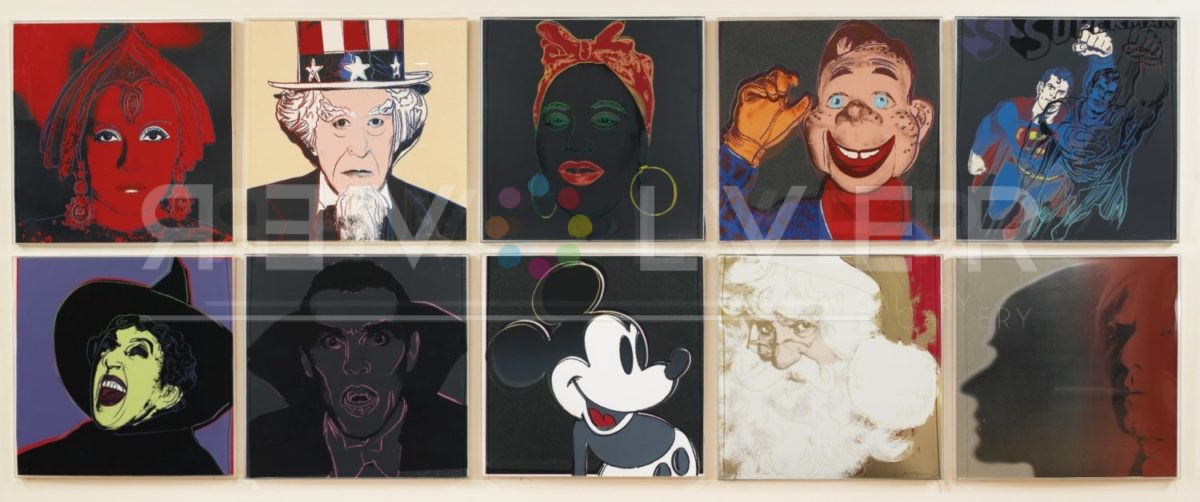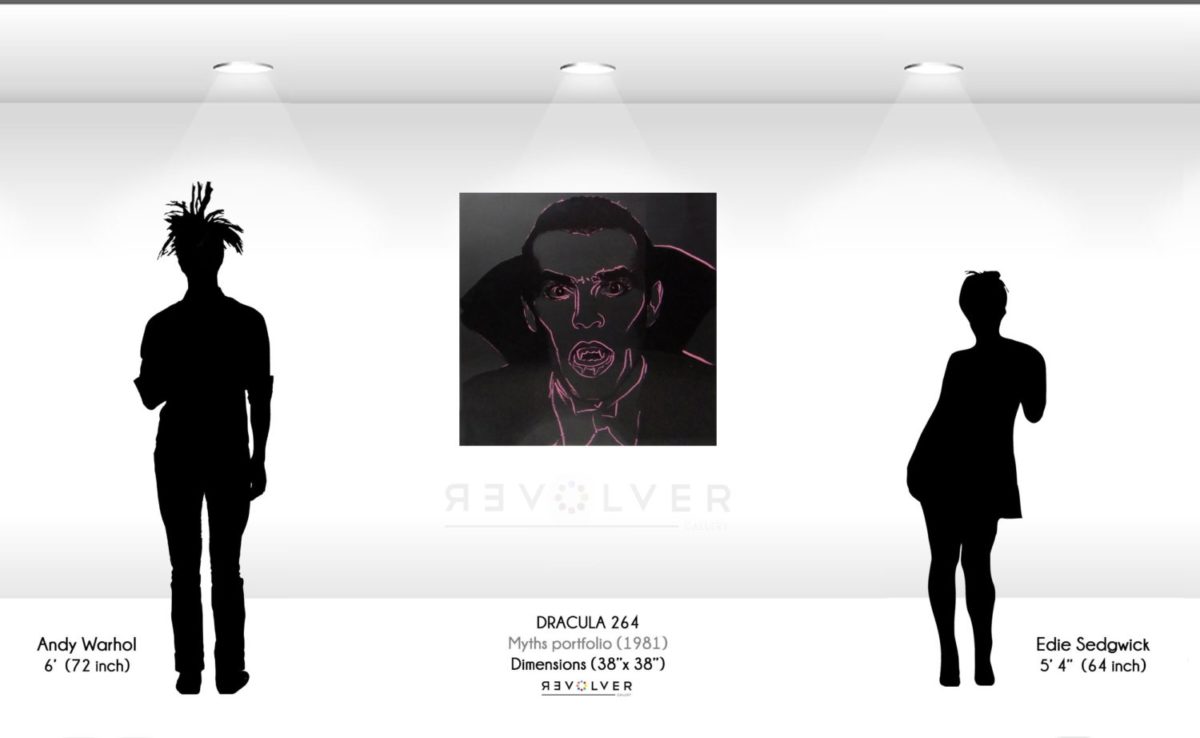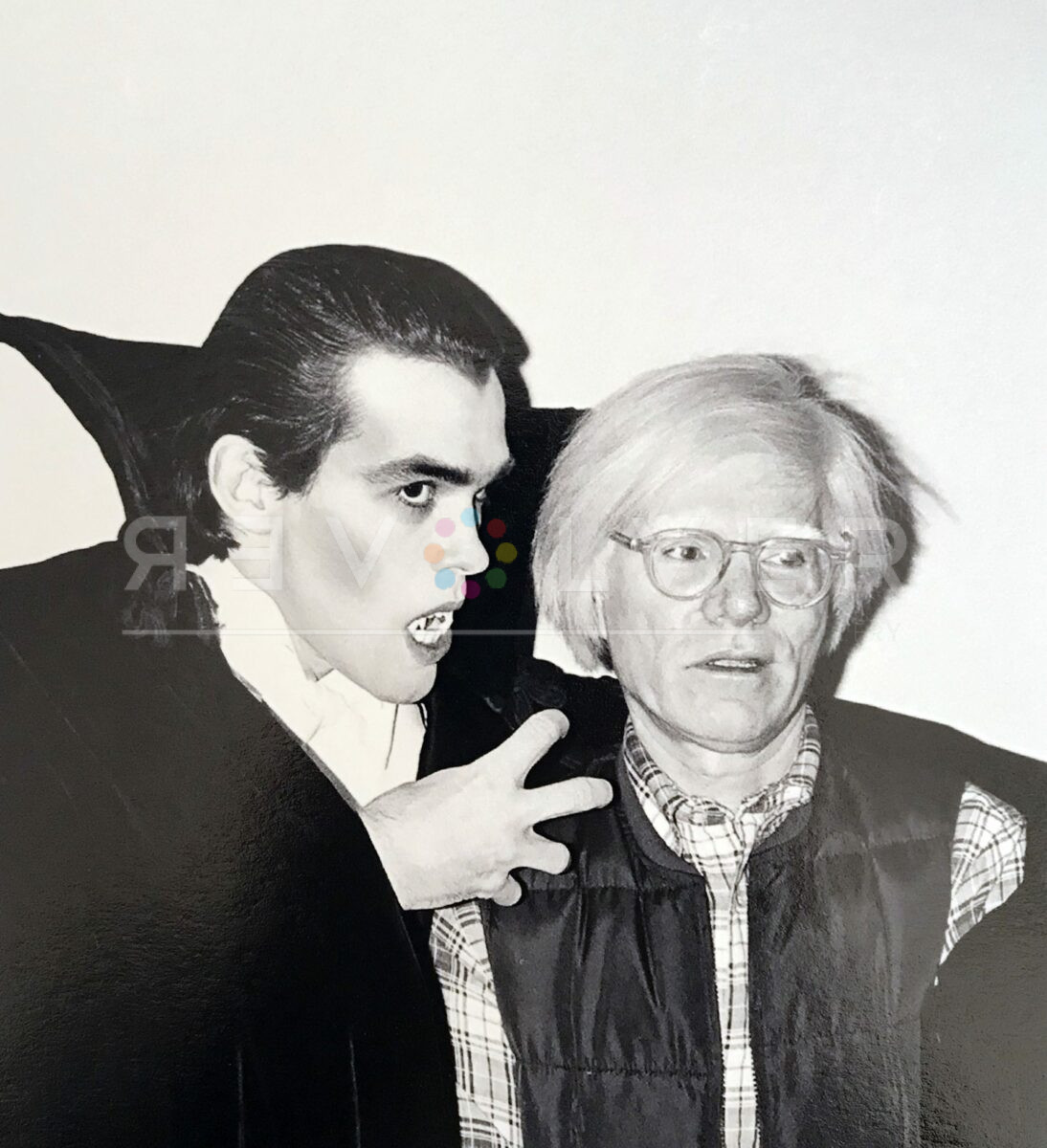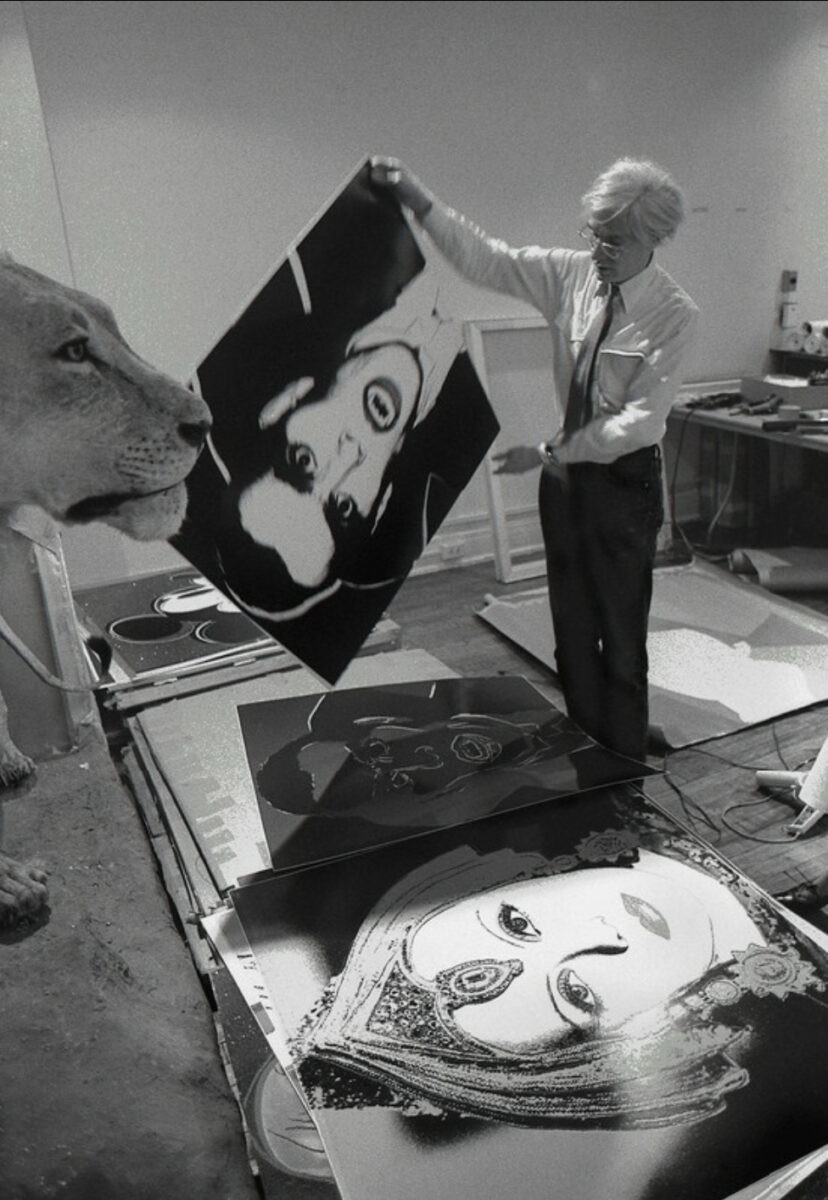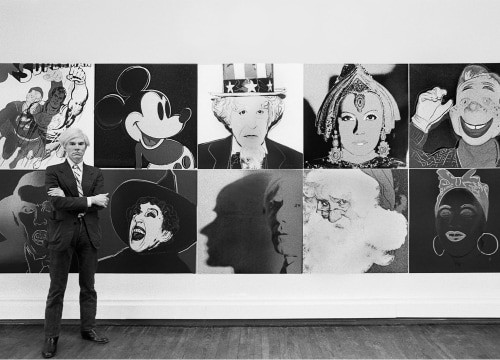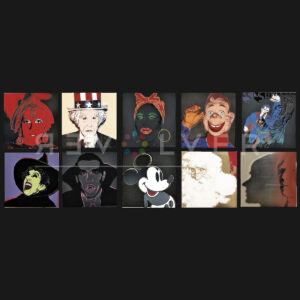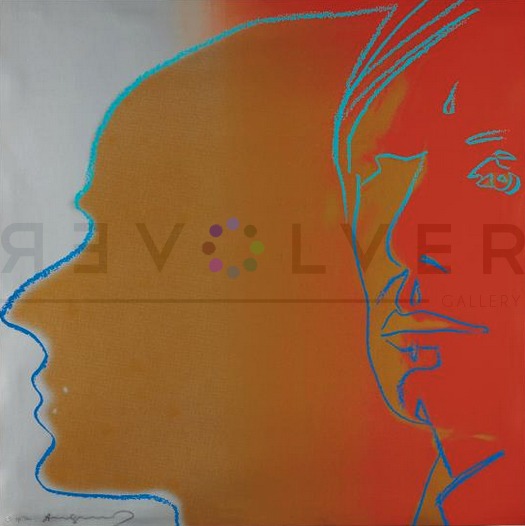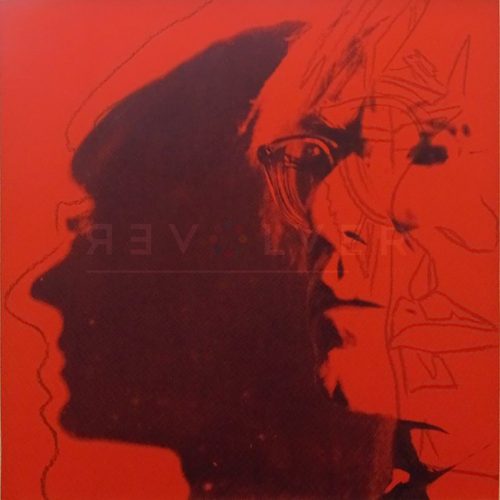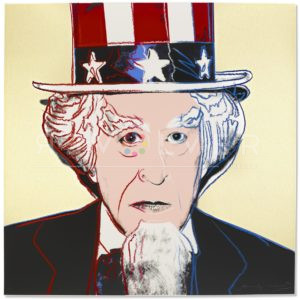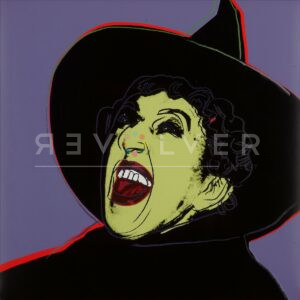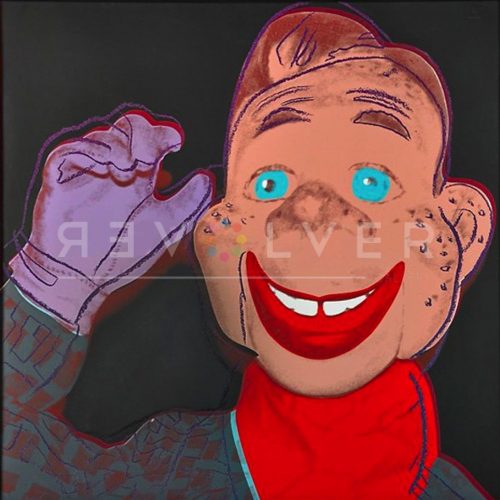Dracula 264 by Andy Warhol is one of ten screenprints featured in Warhol’s Myths series from 1981. Warhol frequently established his fascination with celebrities, commercial idols, and other relevant figures in works like Marilyn Monroe and Mao. In Myths, however, the artist strays from reality and into the world of fantasy, showcasing well-known mythical figures from American history, culture, and cinema. The subjects, which are drawn from ancient folklore, childhood stories, and allegorical tales, capture the magic of America’s enchanted past and evoke a sense of nostalgia. Warhol pushes the artwork’s luster and charm even further, by inlaying nine of the ten prints with shimmering diamond dust.
Dracula 264 is based on a still from director Tod Browning’s film, Dracula (1931), featuring one of cinema’s most notorious and iconic villains. Warhol’s interest in Dracula can be dated back to 1974, when he produced Blood for Dracula alongside director Paul Morrissey, a witty spoof on various Dracula tropes, interspersed with homoerotic sex scenes and outrageous violence. Blood for Dracula has since become a cult classic.
Warhol’s Dracula 264 print depicts Dracula in full terror as he emerges from the shadows. The vampire bares his razor-sharp fangs, hypnotizing the viewer with his piercing gaze as if commanding us to obey his every wish. The pink gradient highlights his angular cheekbones and pointed ears, a juxtaposition against the dark cloak framing his face. One of Warhol’s most notable techniques is tracing over his subjects with brighter, contrasting colors so as to accentuate their features, as can be seen in the Reigning Queens and Endangered Species series. Warhol’s signature can be found on the bottom right of the print.
Apart from iconic imagery, each print in the Myths collection is said to represent a facet of Warhol’s personality (even using a self portrait to recreate The Shadow). With his fantastical creations and mysterious demeanor, Warhol himself may be compared to a mythical being. In their entirety, these works encapsulate Warhol’s outlandish, flamboyant aura. Dracula 264 in particular derives from Warhol’s nickname slash “alter ego”: “Drella,” a portmanteau of “Dracula” and “Cinderella,” and a reference to Warhol’s pale skin, gaunt appearance, and night owl habits. During the day he would bury himself in his artwork, cooped up in his cave as if he were fairytale princess Cinderella. By night he would cast off his bashful disguise and unleash his wild side, commonly hosting or visiting parties with his closest friends and confidants. Lou Reed and John Cale, two former members of the rock band The Velvet Underground, released an album titled Songs for Drella to honor the influential artist following his death.
Dracula 264, along with other prints in the Myths collection, may provide us with clues to unraveling the profound enigma that is Warhol. Overtly self-referential, the artist places himself among his idols in this highly acclaimed series.
Photo credit: Andy Warhol with Dracula. Photograph by Barbara J. Goldner. Courtesy of St. Lawrence University.

